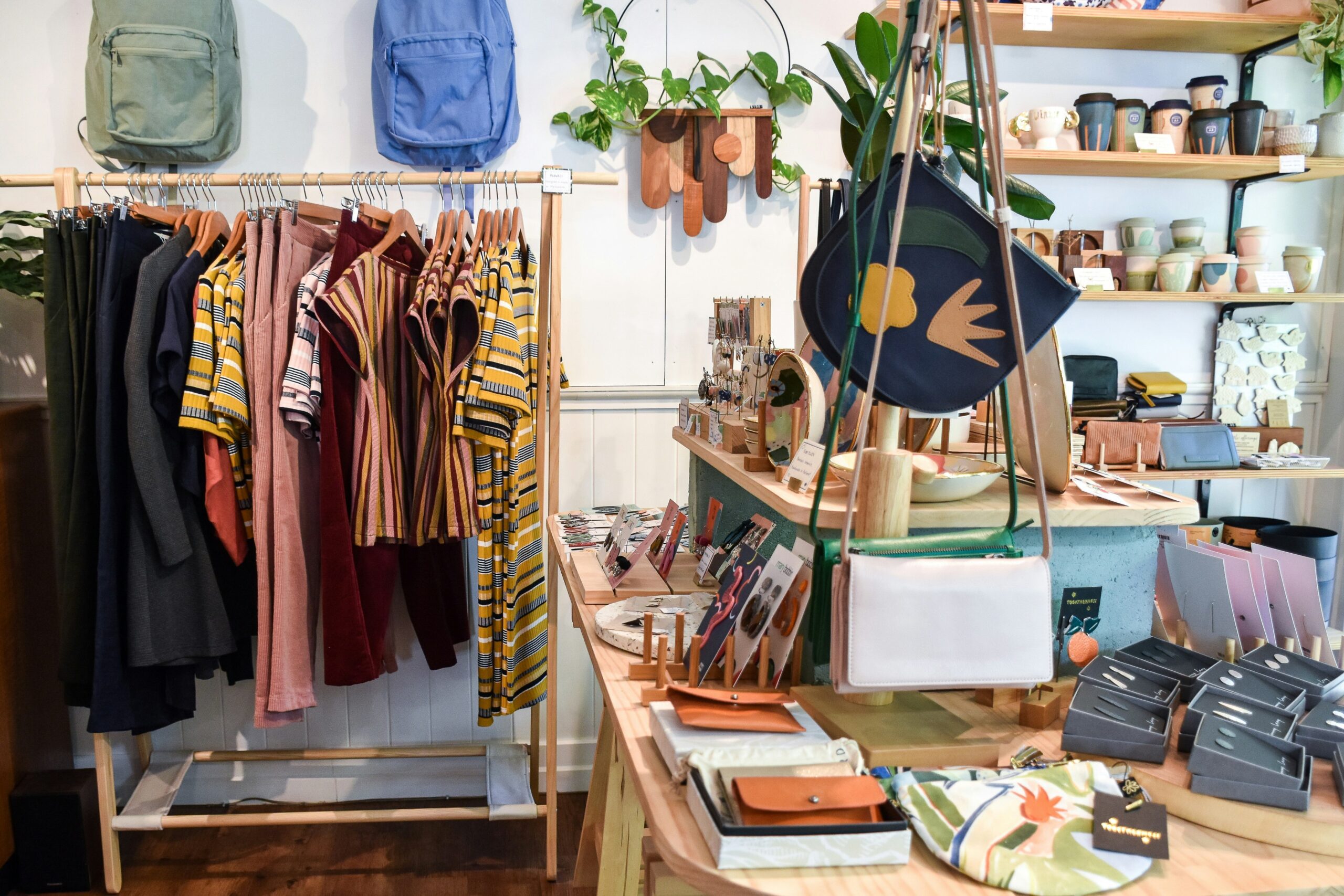

Introduction to Sustainable Fashion
Fashion is a dynamic form of self-expression. It allows us to showcase our personality and creativity, but the choices we make can have a far-reaching impact on the world around us. The rise of sustainable fashion presents an exciting opportunity to align our style with our values.
Every year, millions of tons of clothing end up in landfills due to fast fashion trends that prioritize quantity over quality. This rapid consumption harms not only the environment but also the people who produce these garments under often exploitative conditions. As consumers become more aware of these issues, many are seeking alternatives that promote sustainability and ethical practices.
But what does “sustainable fashion” really mean? And how can you incorporate eco-friendly choices into your wardrobe without sacrificing style or breaking the bank? Whether you’re a seasoned advocate for sustainability or just starting your journey, this guide will help you navigate through practical tips and resources for building a more conscious closet. Get ready to explore stylish options that respect both planet and people!
The Environmental Impact of Fast Fashion
Fast fashion is a growing concern in today’s world. It thrives on delivering trendy clothing at lightning speed, but the cost to our planet is staggering.
The production process often involves toxic dyes and chemicals that pollute water systems. This not only harms aquatic life but also affects communities relying on these water sources for survival.
Moreover, the sheer volume of clothing produced leads to massive amounts of waste. Many garments end up in landfills where they take years, if not decades, to decompose.
Let’s not forget about carbon emissions associated with manufacturing and transportation. The fast fashion industry contributes significantly to global warming through its energy-intensive processes.
Choosing sustainable alternatives can help mitigate these impacts. Being mindful about what we buy makes a difference—not just for our wardrobes but for the environment as well.
Tips for Building a Sustainable Wardrobe
Building a sustainable wardrobe starts with understanding your style. Identify what you love to wear and focus on key pieces that reflect your personality.
Invest in quality over quantity. Choose timeless items made from sustainable materials that will last for years rather than fast fashion trends that fade quickly.
Mix and match is your best friend. Look for versatile clothing that can be styled in multiple ways, so you get more wear out of each piece.
Consider second-hand shopping as an eco-friendly option. Thrift stores and online platforms often have unique finds at affordable prices.
Don’t forget about care! Properly washing and storing clothes extends their life cycle, reducing waste over time.
Embrace the art of minimalism. A curated wardrobe not only simplifies dressing but also promotes conscious consumption habits.
Ethical and Fair Trade Practices in Fashion
Ethical and fair trade practices are essential pillars of sustainable fashion. They ensure that every piece of clothing is made with respect for people and the planet.
When brands commit to ethical production, they prioritize fair wages and safe working conditions. This commitment not only uplifts workers but also fosters a sense of community within the industry.
Fair trade certification is another key aspect. It guarantees that producers receive an equitable share of profits. This practice helps small-scale artisans thrive, promoting their crafts while preserving traditional techniques.
Consumers play a crucial role too. By choosing brands that value transparency, we can support those who make responsible choices in sourcing materials and labor.
In essence, embracing ethical fashion means championing human rights alongside environmental sustainability. It’s about recognizing the story behind each garment we wear and making conscious decisions every time we shop.
Supporting Small and Local Businesses in the Fashion Industry
Supporting small and local businesses in the fashion industry can transform your wardrobe while making a positive impact. These brands often prioritize quality over quantity, crafting unique pieces that tell a story.
Local artisans pour their creativity into every item they produce. When you shop small, you’re not just buying clothes; you’re investing in craftsmanship and individuality. Each piece reflects personal touch rather than mass production.
Moreover, these businesses typically adhere to ethical practices. They are more likely to pay fair wages and maintain safe working conditions for their employees. This connection fosters community bonds and promotes sustainable development.
Shopping locally also reduces carbon footprints associated with transportation. Less shipping means fewer emissions, contributing positively to the environment.
Every purchase from a small brand supports dreams and livelihoods within your community, creating an ecosystem of encouragement and innovation in fashion.
How to Incorporate Sustainability into Your Current Wardrobe
Start by assessing what you already own. Go through your closet and identify pieces that you love but rarely wear. Think of ways to style them differently. Layering or accessorizing can breathe new life into old favorites.
Next, consider repair over replacement. A simple stitch can fix a tear, while replacing buttons can make an item feel brand new again.
When shopping for new items, prioritize quality over quantity. Look for timeless pieces made with sustainable materials that will last longer than fast fashion finds.
Swap clothes with friends or participate in local clothing exchanges to refresh your wardrobe without spending money or contributing to waste.
Educate yourself on the brands you support. Choose those committed to ethical practices and sustainability initiatives whenever possible. Your choices matter more than you think; they influence trends and encourage positive change within the industry.
Resources for Shopping Sustainably
Finding resources for sustainable shopping has never been easier. Start with websites dedicated to eco-friendly brands, like Good On You and Eco Warrior Princess. They provide comprehensive ratings on companies’ sustainability practices.
Social media platforms are treasure troves of information too. Follow influencers who focus on ethical fashion; they often share tips and highlight brands that prioritize sustainability.
Don’t forget about local directories or apps that help you locate thrift shops and second-hand stores in your area. Shopping pre-loved items can significantly reduce waste while adding unique pieces to your wardrobe.
Consider subscribing to newsletters from sustainable fashion organizations. These will keep you updated on the latest trends, sales, and innovations in the world of eco-conscious clothing. Your choices matter now more than ever!
Conclusion
Sustainable fashion is more than just a trend; it’s a movement that encourages us to rethink how we shop and what we wear. By understanding the environmental impact of fast fashion, we can make choices that benefit both our wardrobes and the planet.
Building a sustainable wardrobe involves thoughtful shopping habits. Seek out brands committed to ethical practices, prioritize quality over quantity, and explore second-hand options whenever possible. This not only reduces waste but also supports fair labor practices in the industry.
Supporting small businesses can have a significant positive effect on your local economy as well as provide you with unique pieces that stand out from mass-produced items. Local artisans often focus on craftsmanship, ensuring each piece tells its own story.
If you’re looking for ways to incorporate sustainability into your current clothing collection, consider upcycling or swapping clothes with friends. Small changes can lead to big impacts when it comes to reducing textile waste.
As consumers become increasingly aware of their choices, many resources are available for shopping sustainably—from online directories showcasing eco-friendly brands to apps that help identify ethical companies. Take advantage of these tools as you embark on your sustainable fashion journey.
The path toward a conscious wardrobe requires effort and thoughtfulness but offers great rewards for both individuals and the environment alike. Embrace this exciting challenge—your closet will thank you!
